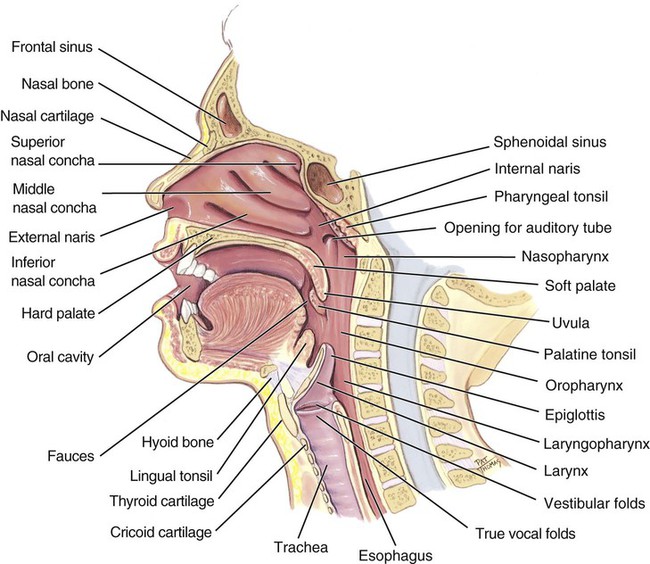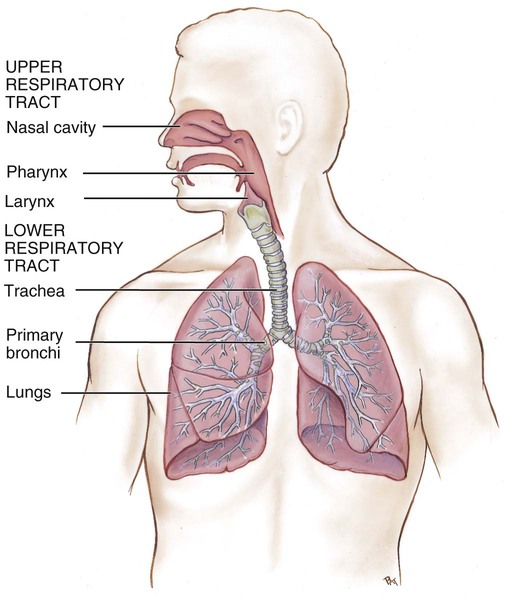1. List and describe the structures of the upper respiratory tract. 2. List and describe the structures of the lower respiratory tract. 3. Explain what occurs during inhalation and exhalation. 4. Explain the difference between external respiration and internal respiration. 5. Explain how respiration is regulated by the brain. 6. Identify factors that influence breathing. 7. Describe ways in which the aging of an individual affects the respiratory system. The conducting passages are divided into the upper respiratory tract and the lower respiratory tract (Figure 13-1). The upper respiratory tract includes the nose, pharynx, and larynx. The lower respiratory tract consists of the trachea, bronchial tree, and lungs. These passageways open to the outside and are lined with mucous membrane. In some regions the membrane has hairs that help filter the air. Other regions have cilia to propel mucus. The interior chamber of the nose is the nasal cavity (Figure 13-2). It is divided into two parts by the nasal septum. Air enters the nasal cavity from the outside through two openings—the nostrils, or external nares (NAY-reez). The openings from the nasal cavity into the pharynx are the internal nares. The palate forms the floor of the nasal cavity and separates the nasal cavity from the oral cavity. The anterior portion of the palate is called the hard palate because it is supported by bone. The posterior portion has no bony support, so it is called the soft palate. The soft palate terminates in a projection called the uvula (YOO-vyoo-lah), which helps direct food into the oropharynx. Nasal conchae (KONG-kee) are bony ridges that project into the nasal cavity (see Figure 13-2). The three nasal conchae increase the surface area of the nasal cavity to warm and moisten the air. They also help direct air flow through the nasal cavity. Dust and other particles in the air tend to become trapped in the mucous membrane around the nasal conchae.
Respiratory System
Introduction to the Respiratory System
Ventilation
Conducting Passages
Nose and Nasal Cavities


Respiratory System
Get Clinical Tree app for offline access





